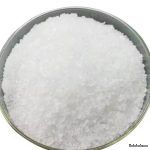Chloramine Toxicity: The Invisible Danger in Water and Air
Chloramine is a chemical compound that many people encounter daily, often without realizing it. It’s commonly used as a disinfectant in water treatment facilities, where it helps kill bacteria and ensure safe drinking water. However, chloramine is also a toxic substance that can pose serious risks to human health, pets, and aquatic life. Understanding its dangers is crucial, especially since exposure can occur through drinking water, inhalation, or skin contact.
 Chloramine is formed when chlorine reacts with ammonia. While it’s less volatile than chlorine, it’s more stable and longer-lasting, making it a popular choice for water treatment. However, this stability also means it can persist in water systems and air, increasing the risk of exposure. Even at low concentrations, chloramine can cause harm, particularly to vulnerable populations like children, the elderly, and individuals with respiratory conditions.
Chloramine is formed when chlorine reacts with ammonia. While it’s less volatile than chlorine, it’s more stable and longer-lasting, making it a popular choice for water treatment. However, this stability also means it can persist in water systems and air, increasing the risk of exposure. Even at low concentrations, chloramine can cause harm, particularly to vulnerable populations like children, the elderly, and individuals with respiratory conditions.
What Happens When Chloramine Enters the Body?
The effects of chloramine toxicity depend on the route of exposure. Inhalation is the most common and dangerous form, as chloramine gas can irritate the respiratory tract, causing coughing, wheezing, and shortness of breath. In severe cases, it can lead to chemical pneumonitis, a life-threatening inflammation of the lungs. Skin contact with chloramine-contaminated water can cause irritation, redness, and rashes, while ingestion of high levels can lead to gastrointestinal distress, including nausea and stomach pain.
Chloramine doesn’t just harm humans—it’s also toxic to aquatic life. When chloramine-treated water is released into rivers or lakes, it can harm fish and other organisms by damaging their gills and disrupting their ability to breathe. This makes it a significant environmental concern, particularly in areas where water treatment plants discharge into sensitive ecosystems.
Why Chloramine Is a Hidden Risk
One of the biggest dangers of chloramine is its ability to form toxic byproducts, such as nitrosamines, which are known carcinogens. These byproducts can accumulate in water systems and pose long-term health risks. Additionally, chloramine can corrode plumbing systems, leaching heavy metals like lead and copper into drinking water. This is particularly concerning in older homes with outdated pipes.
Another risk is the accidental mixing of chloramine with other chemicals. For example, when chloramine-treated water is used in swimming pools or hot tubs, it can react with organic matter to form harmful compounds. Similarly, mixing chloramine with bleach or acids can produce toxic gases, posing a risk to anyone nearby.
Symptoms of Chloramine Toxicity
Recognizing the symptoms of chloramine toxicity is critical for prompt treatment. Common signs include coughing, difficulty breathing, and chest pain after inhalation. Skin contact may cause irritation or rashes, while ingestion can lead to nausea and abdominal pain. If you suspect chloramine exposure, seek medical attention immediately.
In conclusion, while chloramine is an effective disinfectant, its toxicity makes it a hazardous substance that requires careful handling. The risks to human health, pets, and the environment far outweigh its benefits in some cases. By advocating for safer water treatment methods and being aware of the dangers, we can protect ourselves and the planet from the hidden risks of chloramine.
Chemical Properties, Specifications, and Effects of Chloramine
| Property | Specification/Value |
|---|---|
| Chemical Name | Chloramine |
| Chemical Formula | NH₂Cl |
| Molecular Weight | 51.48 g/mol |
| Appearance | Colorless gas or liquid |
| Odor | Pungent, chlorine-like |
| Solubility | Highly soluble in water |
| Stability | Stable in water but decomposes in air |
| Toxicity | Toxic if inhaled, ingested, or absorbed through skin |
| Environmental Impact | Harmful to aquatic life; forms toxic byproducts |
References and Sources
- Environmental Protection Agency (EPA)
The EPA provides detailed information on the use of chloramine in water treatment and its potential health effects.
URL: https://www.epa.gov/dwreginfo/chloramines-drinking-water - Centers for Disease Control and Prevention (CDC)
The CDC offers safety guidelines and health information on exposure to chloramine and its byproducts.
URL: https://www.cdc.gov/ - National Institute for Occupational Safety and Health (NIOSH)
NIOSH outlines the risks of chloramine exposure in occupational settings and provides safety recommendations.
